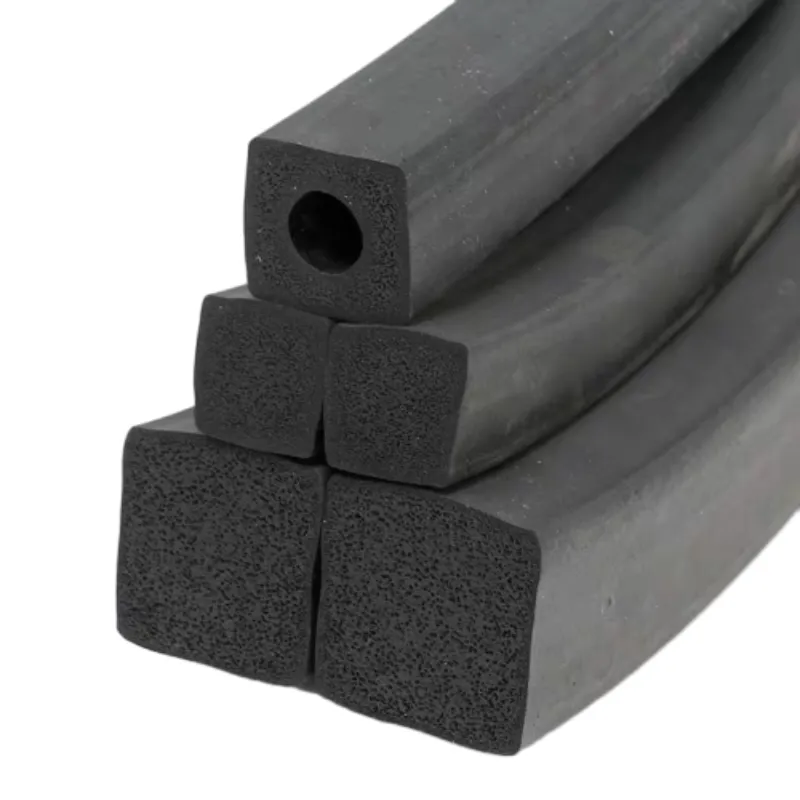adhesive backed rubber strips
The Versatile Applications of Adhesive Backed Rubber Strips
Adhesive backed rubber strips represent a unique combination of flexibility, durability, and convenience, making them an essential tool across various industries and applications. These strips are essentially pieces of rubber material outfitted with a strong adhesive on one side, allowing for quick and easy attachment to a variety of surfaces. Their versatility extends across manufacturing, automotive, construction, and even household uses, making them a staple in both professional and personal projects.
One of the key benefits of adhesive backed rubber strips is their ability to provide a reliable seal. For example, in construction, these strips can be used to weatherproof doors and windows, preventing drafts and improving energy efficiency. The rubber material is inherently resilient, allowing it to withstand environmental factors such as moisture, temperature fluctuations, and UV exposure, which can compromise the integrity of traditional sealing methods. This weatherproof capability makes adhesive backed rubber strips a popular choice for both new constructions and renovations.
In the automotive industry, these strips are often employed to reduce noise and vibration. Placed along the edges of doors, trunks, or hoods, they create a barrier that prevents rattling and enhances the overall driving experience. Moreover, the adhesive backing ensures that the strips adhere firmly to various surfaces, maintaining their position even during considerable movement. This application not only improves comfort but also extends the lifespan of the vehicle by reducing wear and tear on components.
The use of adhesive backed rubber strips in manufacturing is also significant. They can be found in machinery and equipment where vibration dampening is critical. Installing these strips on machinery can lead to reduced noise levels and improved operational efficiency, which is essential in maintaining a safe and productive working environment. Furthermore, their easy installation saves both time and labor costs, allowing for quick adjustments or replacements when necessary.
adhesive backed rubber strips

In households, the utility of adhesive backed rubber strips is equally impressive. They can be used for a myriad of tasks, from protecting surfaces to cushioning items. For instance, these strips can be affixed to the bottom of furniture legs to prevent scratches on hardwood floors. Furthermore, they can serve as bumpers for cabinets and doors, protecting them from damage during everyday use. In kitchens and bathrooms, they can provide slip resistance on tiles, contributing to safety in potentially hazardous areas.
Additionally, these strips are available in various sizes, thicknesses, and colors, making them suitable for both aesthetic and functional purposes. Whether one is looking to enhance the appearance of a product or simply seeking a practical solution for a specific challenge, adhesive backed rubber strips can be tailored to meet diverse requirements.
While the benefits of adhesive backed rubber strips are clear, their proper installation is crucial to achieving optimal performance. Surfaces must be clean, dry, and free from debris before application to ensure a strong bond. This simple preparation can make a significant difference in the longevity and effectiveness of the strip.
In conclusion, adhesive backed rubber strips play a vital role in numerous applications, showcasing their versatility and practicality. From sealing gaps and reducing noise in vehicles to enhancing household safety and protecting surfaces, their uses are nearly limitless. As industries continue to innovate and find new solutions, it is likely that these unassuming strips will remain an integral part of both professional practices and everyday life. With their ease of use and wide-ranging functionality, adhesive backed rubber strips truly exemplify the phrase, small but mighty.
-
Under Door Draught Stopper: Essential ProtectionNewsJul.31,2025
-
Garage Door Seal and Weatherstrips for ProtectionNewsJul.31,2025
-
Edge Banding Tape for Perfect EdgesNewsJul.31,2025
-
Table Corner Guards and Wall Corner ProtectorsNewsJul.31,2025
-
Stair Nose Edging Trim and Tile Stair SolutionsNewsJul.31,2025
-
Truck Bed Rubber Mats for Pickup BedsNewsJul.31,2025
-
Window Weather Stripping for Noise ReductionNewsJul.29,2025